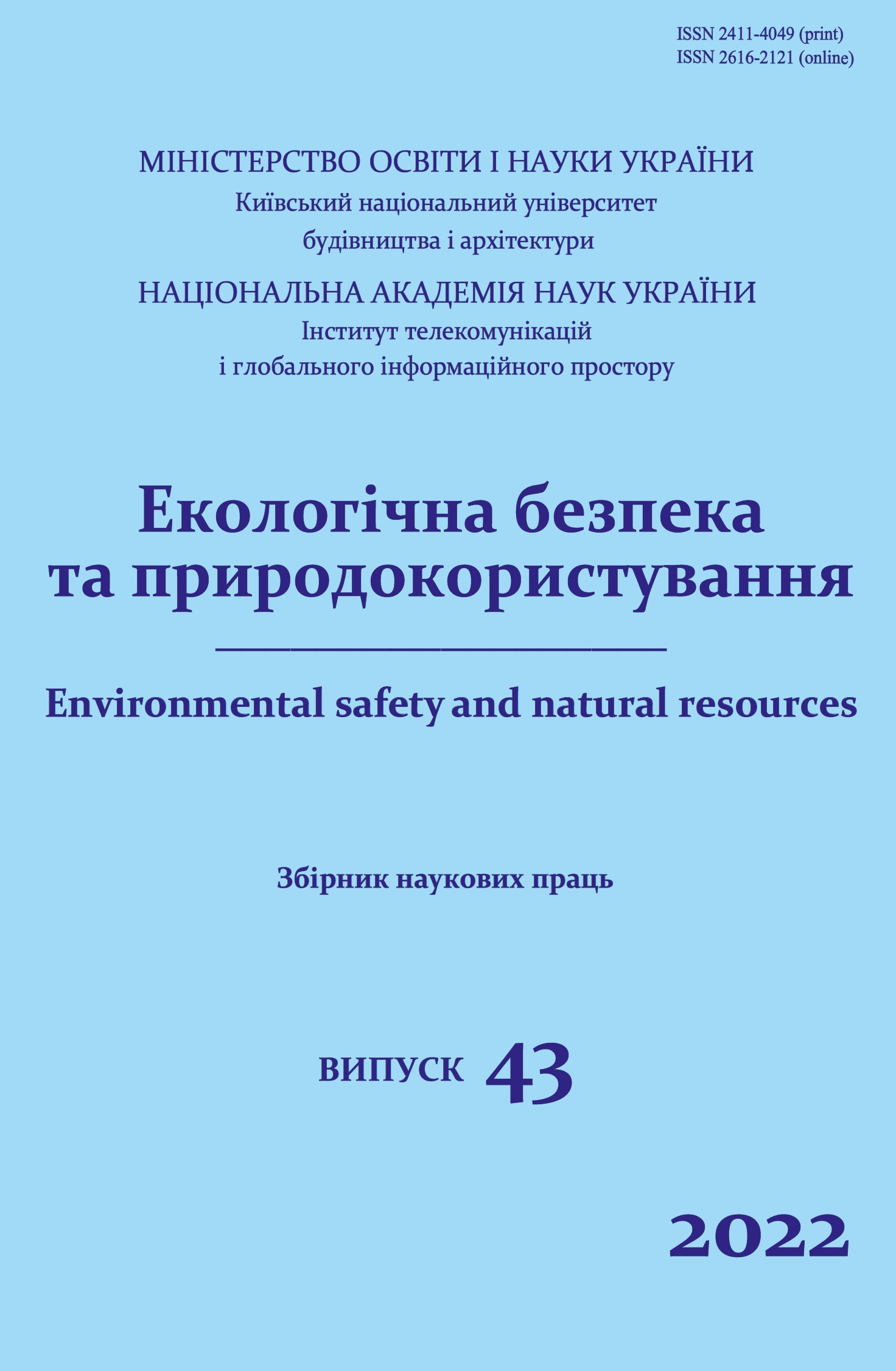Electronic cartographic GIS models of the environmental state of the Dniester canyon
DOI:
https://doi.org/10.32347/2411-4049.2022.3.110-118Keywords:
Canyon, Silurian and Devonian system, rock vegetation, GIS mappingAbstract
The Dniester Canyon is a deep gorge, 100-120-140 m, between the Podil Upland on the left bank and the Carpathian and Prut-Dniester Uplands on the right bank. The canyon is famous for its classic geological sections of the Silurian and Devonian systems, between which there is a gradual transition. There are only four such incisions in the world: ours, as well as in the Czech Republic, Scotland and the United States. Great geomorphological attractiveness of the canyon: two Upper Pleocene supra-canyon and five Quaternary intra-canyon river terraces; caves, waterfalls, travertine formations, bizarre rocks of physical and chemical weathering. The rocky flora and fauna are protected by natural monuments, reserves, regional landscapes and natural national parks. These objects are listed in the Red and Green Books. Therefore, the Dniester Canyon was chosen as one of the seven wonders of nature. That is why it is necessary to preserve this national heritage for present and future generations. To do this, environmental safety systems are developed by GIS mapping methods. The electronic cartographic material in geoinformation systems are digital or vector maps. The Vector maps are created based on the registration of raster scanned map material or satellite images. Vector layers can be interpolated or created from thematic maps using databases. Most often, measuring operations in GIS packages are implemented in the form of special functions and presented as a separate menu item. Such functions include: measurement (determination) of point coordinates; measurement of distances between two specified coordinates (with or without taking into account the three-dimensional coordinate system); measuring the length of a straight or broken line; measuring the length of the perimeter of the polygon; measuring the area of the landfill; measurement of volumes using the surface and cutting plane. Selection operations help the user to get exactly the information he needs at the moment of working with GIS. The selection of the necessary part of information from one or more cartographic databases is carried out using queries.
References
Adamenko, O.M. (2014). Konstruktivnaja jekologija. Saarbrucken, Deutschland: Lambert.
Adamenko, O.M., & Zorin, D.O. (2015). Metodolohiya ta orhanizatsiya naukovykh doslidzhen' dlya vyrishennya hlobal'nykh i rehional'nykh ekolohichnykh problem i staloho rozvytku terytoriy. Ekologichna bezpeka ta zbalansovane resursokorystuvannya, 2(12), 5-43.
Aristov, M.V., & Tymchenko, O.V. (2007). Vyvchennya zsuviv na terytoriyi Ternopil's'koyi oblasti dystantsiynymy metodamy. Materialy rehional'noyi narady. Ternopil`.
Voloshyn, I.M. (1998). Landshaftno-ekologichni osnovy monitoryngu. L`viv: Prostir.
Guczulyak, V.M. (2001). Landshaftna ekologiya. Heokhimichnyi aspekt. Chernivci: Ruta.
Adamenko, O.M., Adamenko, Ya.O., Arxypova, L.M. et al. (2013). Ekologichna bezpeka zbalansovanogo resursokorystuvannya v Karpats`komu regioni. Ivano-Frankivs`k: Symfoniya forte [in Ukrainian].
Adamenko, O.M., Adamenko, Ya.O., Arxypova, L.M. et al. (2014). Ekologichna bezpeka terytorij. Ivano-Frankivs`k: Suprun V. P. [in Ukrainian].
Zastavetska, O.V., Zorin, D.O., & Trysnyuk, V.M. (2010). Geografichna, turystychna ta ekologichna navchal`ni praktyky u Dnistrovs`komu kan`joni. Ternopil': Ternograf [in Ukrainian].
Zorin, D.O. (2007). Dnistrovs`ky`j kan`jon. Ekologo-turystychnyj narys. Ternopil': Novyj kolir [in Ukrainian].
Adamenko, O.M., Adamenko, Ya.O., Mishhenko, L.V., & Zorin, D.O. (2015). Komp’yuteryzovani systemy ekolohichnoyi bezpeky. Ivano-Frankivs`k: Suprun V. P. [in Ukrainian].
Marynych, O.M., & Shyshhenko, P.G. (2003). Fizychna geografiya Ukrayiny. Kyiv: Znannya.
Mishhenko, L.V. (2014). Pryrodno-texnogenna bezpeka terytorij Zaxidnogo regionu Ukrayiny. Ivano-Frankivs`k: Suprun V. P. [in Ukrainian].
Chajkovskyj, M.P. (1981). Dnistrovs`ky`j kan`jon. L`viv: Kamenyar [in Ukrainian].
Bogutsky, A., Lanczont, M., & Wojtanowicz, J. (2000). Valne of the Zahwizdia profile for stratigraphy and paleogeography of the eo- and mezopleistocene of central Europe. Lutsk: Vezha.
Czyzewski, J. (1928). Z historij doliny Dniestry. In Pr. Geogr., (pp. 33-62). Lwow Warszawa.
Gajewski, W. (1931). Szczatki flory pierwotnej w jarze Dniestru. In Ochrona Przyrody, (r.ll, pp. 10-39). Krakow.
Holowkiewich, E. (1890). Las na Podolu. Sylwan, Lwow.
Downloads
Published
How to Cite
Issue
Section
License
Copyright (c) 2022 Zorin D.O.

This work is licensed under a Creative Commons Attribution 4.0 International License.
The journal «Environmental safety and natural resources» works under Creative Commons Attribution 4.0 International (CC BY 4.0).
The licensing policy is compatible with the overwhelming majority of open access and archiving policies.

